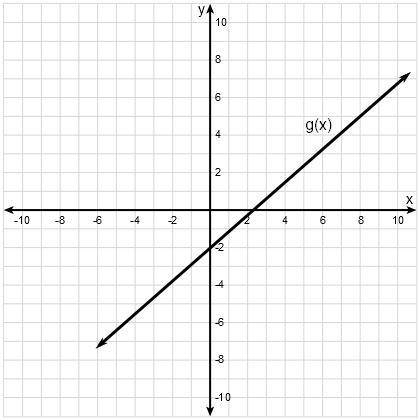
Mathematics, 11.06.2020 16:57 218219
The two linear functions ƒ(x) and g(x) are shown below. ƒ(x) = x + 3 Which of the following is true?
A. The rate of change of ƒ( x) is 20/21 times the rate of change of g( x).
B. The rate of change of ƒ( x) is greater than the rate of change of g( x).
C. The product of the rate of changes of ƒ( x) and g( x) is -6.
D The rate of change of the function g( x) is –2.


Answers: 2


Other questions on the subject: Mathematics


Mathematics, 21.06.2019 19:30, shanua
Needmax recorded the heights of 500 male humans. he found that the heights were normally distributed around a mean of 177 centimeters. which statements about max’s data must be true? a) the median of max’s data is 250 b) more than half of the data points max recorded were 177 centimeters. c) a data point chosen at random is as likely to be above the mean as it is to be below the mean. d) every height within three standard deviations of the mean is equally likely to be chosen if a data point is selected at random.
Answers: 2

Mathematics, 21.06.2019 21:30, natalieburnett82
Ihave a triangle with a 60 degree angle. lets use d for that angle. what are the values of e and f if d is 60 degrees? and what do you notice about the values of e and f?
Answers: 2
You know the right answer?
The two linear functions ƒ(x) and g(x) are shown below. ƒ(x) = x + 3 Which of the following is true?...
Questions in other subjects:

Chemistry, 04.10.2020 02:01

Mathematics, 04.10.2020 02:01


Computers and Technology, 04.10.2020 02:01


Mathematics, 04.10.2020 02:01


English, 04.10.2020 02:01


History, 04.10.2020 02:01



